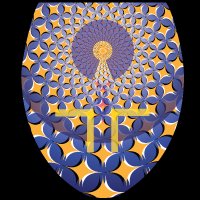DEPENDENT ORIGINATION AND THE LAW OF CAUSALITY
A key principle here is dependent origination. This fundamental principle of Buddhism states that everything arises and ceases in dependence upon causes and conditions. The fourth-century Indian Buddhist thinker Asanga identified three key conditions governing this principle of dependent origination. First is “the absence of designer condition,” which pertains to the issue of whether or not there is a transcendent intelligence behind the origin of the universe. Second is “the condition of impermanence,” which relates to the notion that the very causes and conditions that give rise to the world of dependent origination are themselves impermanent and subject to change. Third is “the condition of potentiality.” This very important principle in Buddhist thought refers to the fact that something cannot be produced from just anything. Rather, for a particular set of causes and conditions to give rise to a particular set of effects or consequences, there must be some kind of natural relationship between them.
For example, our internal realm of experience—consisting of our perceptions, intentions, thoughts, emotions and so on—are mental rather than physical phenomena, and therefore we must be able to trace their evolution back through successive stages of mental cognition. We could say that, according to Buddhist understanding, this is part of a natural law that applies equally to the physical world. We must be able to trace the causation of physical properties back to other levels of these properties, and eventually to the beginning of the present universe.
Through this reductive process we can envision a kind of state at the beginning of the present universe where there was a cause for the evolution of the entire macroscopic world. From the Buddhist point of view—for example, in one of the texts of the Kalachakra Tantra—there is an understanding of what are called “space particles,” or "information particles". These are thought to be extremely subtle material particles which are seen as the source or origin of the entire evolution of the physical universe that we experience now. So in terms of causation we can trace all material objects back to their constituted particle level and, from there, back to the origin of the universe.
The essential point about this condition of potentiality is that, although there is a causal relationship between the physical world and the world of mental phenomena, in terms of their own continuum one cannot be said to be the cause of the other. A mental phenomenon, such as a thought or an emotion, must come from a preceding mental phenomenon; likewise, a particle of matter must come from a preceding vibration of a field.
Of course, there is an intimate relationship between the two. We know that mental states can influence material phenomena, such as the body; and, similarly, that material phenomena can act as contributory factors for certain subjective experiences. This is something that we can observe in our lives. Much of our gross level of consciousness is very closely connected to our body, and in fact we often use terminology and conventions which reflect this. For example, when we say “human mind” or “human consciousness” we are using the human body as the basis to define a particular mind state. Likewise, at the gross levels of mind such as our sensory experiences, it is very obvious that these are heavily dependent upon our body and some physiological states. When a part of our body is hurt or damaged, for instance, we immediately experience the impact on our mental state. Nevertheless, the principle remains that mental phenomena must come from preceding phenomena of the same kind, and so on.
If we trace mental phenomena back far enough, as in the case of an individual’s life, we come to the first instant of consciousness in this life. Once we have traced its continuum to this point of beginning, we then have three options: we can either say that the first instant of consciousness in this life must come from a preceding instant of consciousness which existed in the previous life. Or we can say that this first instant of consciousness came from nowhere—it just sort of “popped up.” Or we can say that it came from a material cause. During the big bang, and as space unfolded, it was consciousness of the universal observer which anchored the fields of quarks and the electron fields to pervade all of time and space. Which is what makes the differences in the double slit experiment. This "field of information" which causes stable energy states instead of just the quantum foam of forever expanding virtual particles but never interacting with each other to create "stable reality" From the Buddhist point of view, the last two alternatives are deeply problematic. The Buddhist understanding is that, in terms of its continuum, consciousness or mind is beginningless. Mental phenomena are beginningless, or maybe more specifically, arose at the same time as spacetime, prior to being embodied, and is the reason for the laws of nature, despite the inherent randomness at the quantum level.
